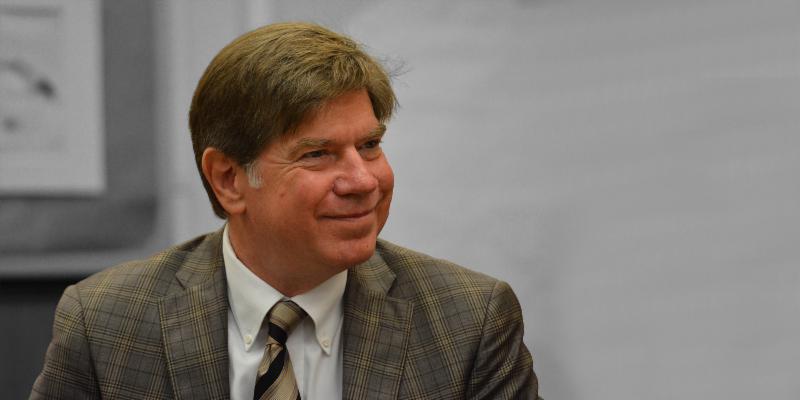Physics for All

The Progressive Science Initiative® (PSI®) physics program started in one classroom in a vocational school in Bergen County, New Jersey in 1999. Charged with teaching sixteen 9th-graders pre-engineering for 90 minutes a day, new teacher Dr. Robert Goodman, an MIT physics graduate who became CEO of several audio companies before entering the education field, faced a number of obstacles: the classroom had no furniture, only a few of the 9th-graders had taken Algebra I, and no one was sure what a “pre-engineering course” actually meant. Dr. Goodman borrowed round tables and chairs from the faculty room and decided to split the 90 minutes into 30 minutes of Algebra I, 30 minutes of Project Lead the Way Engineering, and 30 minutes of a course that had never existed before - PSI Algebra-Based Physics. By 2006, students at Bergen County Technical School were taking the Advanced Placement Physics B exam at 22 times the state average and passing the exam at 24 times the state average, getting accepted into top-tier universities including MIT, Harvard, and Wellesley, and Dr. Goodman was named State Teacher of the Year. In this interview, hear from Dr. Goodman about what made this program so successful and how other schools can replicate the results.
Q: Why physics?
A: Physics is the fulcrum around which the improvement of science and mathematics education revolves. It’s more fundamental than chemistry and biology, and less abstract than mathematics. It provides the foundation for science while revealing the power and usefulness of mathematics.
Also, virtually all university STEM majors require physics; more than any other science. Social justice requires that all high school students study physics so that they have equal access to STEM career paths. International competitiveness requires that since a society must realize the potential of all its citizens if it is to compete on the global stage.
Q: How did you make the physics course accessible to 9th-grade students?
A: In the past, most students have been excluded from physics due to its appearance late in the science sequence coupled with being taught using higher level mathematics than most students would take. The result: this most important of all sciences is studied least of all.
Physics can be understood with just Algebra I, which is learned by all 9th grade students. Coupling the learning of algebra with that of physics based on algebra improves the learning of both. Creating an algebra-based physics course which accomplished that was a key first step.
The next step was creating an approach to teaching and learning that would be welcoming to all students.
Q: What is this approach to teaching and learning? Can it work for other subjects?
A: The approach we’ve developed has proven effective for all students. Curriculum, pedagogy and assessment are interwoven through the use of technology to create an engaging learning environment. Brief direct instruction is followed by collaborative problem solving and the use of real-time formative assessment to drive student engagement and learning. Students with the strongest background in science and mathematics help those lacking that background, improving the depth of understanding of both.
Q: How are you able to share this program with other schools?
A: This program was designed to be replicated in other schools. All the course materials are electronic files which are free, editable and posted online at www.njctl.org. These files capture our approach to teaching and learning as well as the content of almost all K-12 mathematics and science. A few days of training in their effective use is recommended but not required. The need for more physics teachers is solved by a one year program which, during the spring or summer, trains a teacher of any subject to teach the first year algebra-based physics that same fall. Then, during the year, NJ teachers learn more advanced physics and after passing the state-required Praxis exams earn a NJ endorsement to teach physics. So, a district can have all its students learning physics in the fall, by having teachers begin courses in the spring or summer.
The same process is used to provide districts needed chemistry teachers so that all students can study chemistry. The only difference is that in order to be prepared to study chemistry in the summer, so they can teach it in the fall, teachers need to first study physics in the springs.
Q: Has the program been successful in other schools?
A: The New Jersey Center for Teaching and Learning (CTL) was founded by the New Jersey Education Association to help spread PSI Physics and other courses throughout the state, country, and world. Since 2007, CTL has developed over 30 free digital courses for PSI K-12 science and PMI® K-12 math housed at www.njctl.org. CTL has created 150+ new physics and chemistry teachers in New Jersey alone, and has trained math and science teachers in multiple states and countries. 6 of the top 12 schools in the state of New Jersey for AP Physics participation are now using this program.
To learn more about this program read about our certification programs or contact us by calling (609) 310-1285 or email CTL at info@njctl.org.
Tags: News


